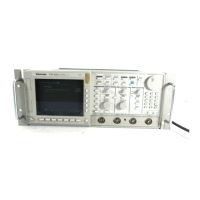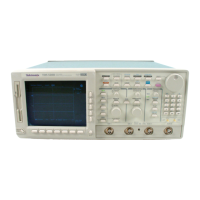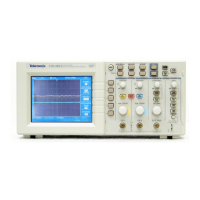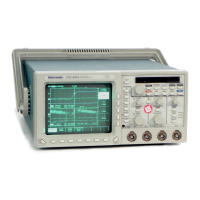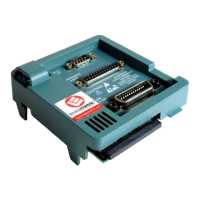TDS 684A, TDS 744A, & TDS 784A User Manual
3–133
Determining Status and Accessing Help
The TDS Oscilloscope can display the status of its internal systems. It also
provides an on-line help system. This section describes how to use the following
two features:
Status which displays a snapshot of system, display, trigger, waveform, and
I/O settings
Help which displays a screen of brief information about each oscilloscope
control when that control is operated
Displaying Status
Press SHIFT STATUS ➞ Status (main) ➞ System, Display, Trigger,
Waveforms, or I/O (side).
System displays information about the Horizontal, Zoom, Acquisition, Measure,
and Hardcopy systems. (See Figure 3–79.) This display also tells you the
firmware version.
Display provides parameter information about the display and color systems.
Trigger displays parameter information about the triggers.
Waveforms displays information about waveforms, including live, math, and
reference waveforms.
I/O displays information about the I/O port(s).
Displaying the Banner
To display the banner (lists firmware version, options, copyright, and patents):
Press SHIFT STATUS ➞ Banner (main). (See Figure 3–80.)

